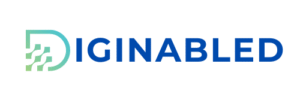In the fast-paced world of digital marketing, a well-optimized website and landing page can make all the difference between success and obscurity.
These digital assets serve as your online storefronts, and when optimized effectively, they can attract and convert visitors into loyal customers.
In this article, we’ll delve into the key strategies and techniques for website and landing page optimization that will help you maximize your digital marketing efforts.
Understanding the Importance of Optimization
Before diving into strategies, let’s understand why website and landing page optimization is crucial. When done right, it can:
Improve User Experience: Optimized pages load faster, have intuitive navigation, and provide valuable content, ensuring a positive user experience.
Boost Search Engine Rankings: Search engines reward well-optimized websites with higher rankings, leading to increased organic traffic.
Enhance Conversion Rates: A well-designed landing page can significantly improve your conversion rate, turning casual visitors into paying customers.
Keyword Research
Keywords are the foundation of optimization. Extensive keyword research helps you identify the terms your target audience is searching for.
Keyword Research Tools like Google Keyword Planner, SEMrush, and Ahrefs can assist in finding relevant keywords with high search volumes and low competition.
On-Page SEO
On-page optimization involves optimizing various elements on your website or landing page:
Title Tags and Meta Descriptions: Incorporate target keywords into title tags and meta descriptions to improve click-through rates from search engine results pages (SERPs).
Content Optimization: Create high-quality, relevant, and engaging content with a focus on natural keyword integration. Ensure proper heading tags (H1, H2, H3) usage and keyword density.
Image Optimization: Compress images to reduce load times and include descriptive alt text.
Mobile Optimization: Make your website and landing pages mobile-friendly to cater to the growing mobile user base.
Page Speed Optimization
Slow-loading pages can lead to high bounce rates.
Use tools like Google PageSpeed Insights to identify areas for improvement and implement techniques like browser caching, minimizing server response times, and optimizing images to boost page speed.
A/B Testing
Testing different elements of your landing page, such as headlines, images, call-to-action buttons, and form fields, through A/B testing can help you identify what resonates best with your audience and improves conversion rates.
Clear Call-to-Action (CTA)
Every landing page should have a clear and compelling CTA that tells visitors what action to take next. Use action-oriented words and make the CTA button stand out with contrasting colors.
User-Friendly Navigation
Ensure easy navigation by organizing your content logically. Implement breadcrumbs, a user-friendly menu, and a search bar to help users find what they’re looking for quickly.
Responsive Design
With mobile users on the rise, having a responsive website is no longer optional. It ensures a consistent and user-friendly experience across all devices.
Monitor Analytics
Use tools like Google Analytics to track user behavior on your website and landing pages. Analyze metrics like bounce rate, conversion rate, and user flow to identify areas for improvement.
Continuous Improvement
Optimization is an ongoing process. Regularly review your website and landing pages, stay updated with industry trends, and adapt your strategies accordingly.
In conclusion, website and landing page optimization are critical components of a successful digital marketing strategy.
By understanding your audience, conducting keyword research, implementing on-page SEO, and continually testing and improving, you can create a powerful online presence that drives traffic, engages visitors, and converts leads into customers.
Stay committed to optimization, and you’ll reap the rewards in the form of increased visibility, higher conversion rates, and a stronger online presence in the digital landscape.
This article is part of our Website and Landing Page Optimization Module.
Module 3: Website and Landing Page Optimization
3.1 Principles of Effective Website Design
3.2 Enhancing User Experience (UX)
3.3 Ensuring Mobile Responsiveness
3.4 Crafting High-Converting Landing Pages
3.5 Conducting A/B Testing for Conversion Rate Enhancement

